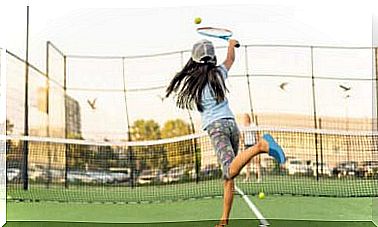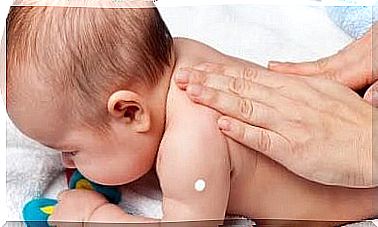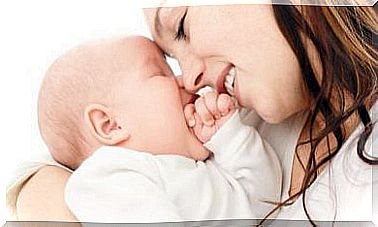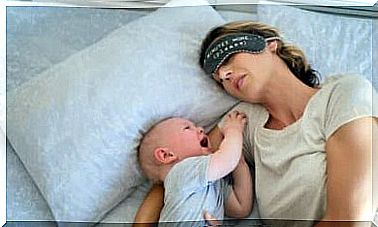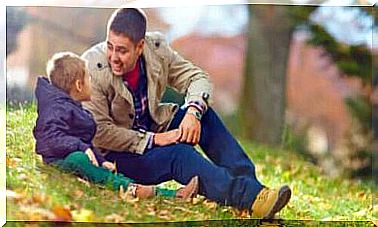Language Evolution: The Characteristics Of The Pre-linguistic Stage

Babies establish contact and communication through the senses and, from birth, are able to transmit information about their needs and conditions. During the first year of life, babies’ language evolves from a simple articulatory exercise to the emission of the first meaningful words. We are talking about the pre-linguistic stage.
Language evolution: characteristics of the pre-linguistic stage
In language development, there are two stages: the pre-linguistic stage and the linguistic stage. The first covers the first 12 months of life, while the second starts with the first words and focuses on the period of language acquisition, when the child begins to integrate content (idea) and form (word).
During the first few months, language development is closely linked to the socialization process. The baby learns to communicate intentions not only through crying, but also through the look, gestures and smile.
This primary form of communication lays the foundations for subsequent verbal communication, in addition to contributing to the development of the attachment figure, essential for the baby’s socio-affective development.

The pre-linguistic stage is organized into an evolutionary sequence that comprises 4 phases:
1st phase: reflex vocalizations and chirping (0-2 months)
During the first month of life, babies emit only reflex vocalizations or sound externalizations. With crying, the communicative process begins, which, depending on the tone, denotes different contents : pain, hunger, cold, sleep or a reflection of any state of well-being or discomfort.
With crying, the baby is able to communicate his needs and, if they are met, he will use it intentionally. Around the second month, babies begin to make spontaneous joints, called twittering or cooing.
2nd phase: babble. vocal game (3-6 months)
From the third month onwards, babies go from making isolated sounds to making voluntary and intentional sounds. They start babbling clearly and steadily with guttural sounds and vowels, repeating the sounds “ga” and “ca” .
For them, it’s like a game, as they experiment with their vocal organs and begin to control them. At the same time, they have fun listening to their own voice. Babies like to scream so they can hear themselves and make purring-like sounds when they are entertained with their games.
Piaget considers that, during this period, the child starts to realize that the phonations, the chirps, the gestures and the guttural noises they produce affect the environment around them. In this way, she learns to communicate, establishing relationships between what she emits and the effect it produces around her.
3rd phase: reduplicative babble. Sound imitation (6-9/10 months)
Through babbling and articulatory games, the child begins to master the emission of different vowel and consonant phonemes. Around the eighth month, the baby starts to produce polysyllabic sounds: “ba”, “pa”, “da”, ”ga”, “ma…” , and the “lalation” or “repetitive groups” appears.
Lalation consists of the emission of sounds by doubling the syllables: “mamama”, “mamimami”, “uiuiui”, “bababa”, “papapa”, “nanana”, “tatata” . In turn, these vocalizations will lead the baby to utter his first words “by accident”.
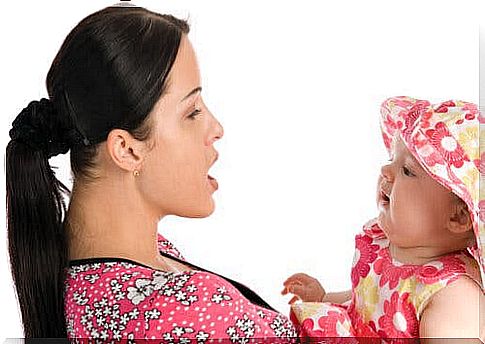
From the sixth month onwards, babies begin to observe and imitate movements, sounds and gestures. They take a special interest in listening to adults talk and enjoy getting attention and talking to them. The baby’s quest for this interaction with adults confirms Bruner’s studies.
Bruner focused his language development studies on social interaction. He considered that there must be adequate interaction structures for language learning to take place. Therefore, at this stage, adults must create communicative contexts in which the baby can interact and evolve in language.
4th phase: intentional communication (9/10-12 months)
Towards the end of the first year, the baby begins to intentionally communicate. He points to objects, says “no” with his head and “bye” with his hand, understands simple orders and reacts to hearing his name.
From the first year onwards, polysyllabic sounds begin to have real meaning. Now they call mom and dad, they are able to imitate animal sounds ( “wow”, “meow”, “moo…” ) and to invent onomatopoeic words that have meaning for them.
During language development, the family and adults play a very important role: lexically stimulating the child. In “conversations”, we should try to associate the phonic meaning (spoken word) with the meaning (object to which the word refers). In this way, the child will associate and fix this relationship in his brain.

